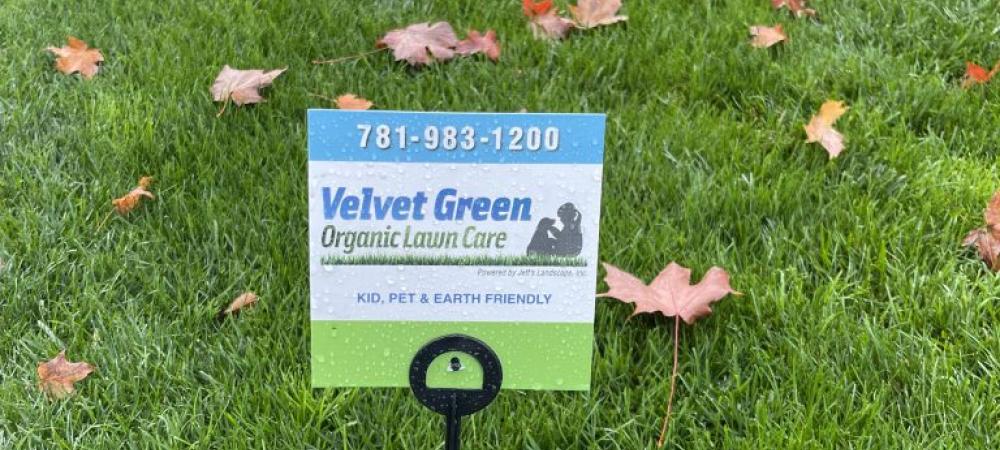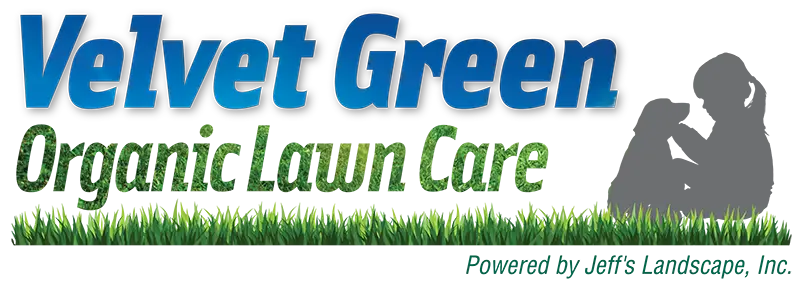5 Keys to Lawn Care Success

The 5 keys to lawn care success are interdependent, and if they are all in place, they will provide outstanding results. If any of the keys are not present, poor results will follow. At Velvet Green we provide three of the five keys to a successful lawn; the other two are dependent on the client.
Soil Health – The health of your soil determines the success of your lawn. Did you know that there are many different soil types and that your soil may be very different from your neighbor’s? At Velvet Green, we have your soil professionally analyzed at a laboratory, which tells us all we need to know so we can make the necessary changes to keep your lawn healthy.
Analysis includes organic matter, phosphorus, potassium, magnesium, calcium, sodium, soil pH, buffer index, cation exchange capacity, percent base saturation, nitrate-nitrogen, sulfur, zinc, manganese, iron, copper, boron, and soluble salts.
Water – It is extremely important to make sure your lawn is getting the water it needs on a consistent basis. Without adequate water, lawns will begin to go dormant and thin out, leaving space for weeds to take over.
Your lawn needs at least 1 inch of water each week. To help build a strong, deep-root system, we recommend watering every other day for 30-45 minutes in each zone of your lawn. We also recommend watering in the morning around dawn (between 4-7 am). This is the best time to water because there is little to no evaporation so most of the water is going into the soil. Avoid watering at night, as this will encourage mildew and fungus growth in your lawn. Also avoid watering mid-day, this is the hottest time of day and most of the water you apply will be lost to evaporation.
Nutrition – Proper nutrition is essential for a healthy lawn. Velvet Green’s organic lawn care programs provide your lawn with a source of natural turf fertilizers that are activated by biological matter. We start with a laboratory soil test that provides a baseline for your soil and tells us whether it is lacking any essential nutrients that need to be addressed (see soil health above). After the test, we will consult you and make recommendations to resolve any issues. From there, our programs include seven fertilizer applications along with crabgrass control, lime, and free spot treatments of weeds.
Seed/Overseeding – Introducing new, improved cultivars of turfgrasses helps keep the lawn thick and healthy, and it’s also the most organic way to prevent weeds. When overseeding, we use our Velvet Green Resilient Turf Mix. This proprietary grass seed mixture contains grass varieties that are lateral spreading and salt-, heat-, and drought-tolerant. This combination of grass seed will help lawns remain resilient through some of the harshest summer conditions in the future.
Cultural Practices – Cultural practices are those things you do to your lawn on a regular basis that can have a major impact on its health, such as mowing. Below are proper cultural practices to follow; these are tried and true techniques that will help you save money and keep your lawn in tip-top shape.
- Mowing frequency – Lawns should be cut regularly usually every 7-10 days depending on the time of year. Determine when to mow by measuring the height of the grass and using the 1/3 rule, which states to avoid cutting off more than 1/3 of the existing grass. So, if you’re mowing at 3 inches, cut your lawn when it’s 4.5 inches tall. Following the 1/3 rule will help your lawn recover faster after being cut.
- Mowing height – All residential lawns should be cut between 3 and 3 ½ inches tall. A lawn that is cut tall uses less water, retains more nutrients, has a deeper root system, and reduces weed populations in the lawn. If the grass is cut shorter, it will require more water and nutrients to survive. A short lawn also exposes the soil to sunlight, allowing weed seeds to germinate and thrive in the lawn.
- Sharp mower blade – Make sure you have a sharp mower blade. A dull blade will rip the tips of the grass instead of making a clean cut, leaving the grass vulnerable to turf diseases and making your lawn look brown after the ripped grass tips have healed. Have your blade sharpened at the beginning of each season.
- Mulching grass clippings – By mulching the grass clippings back into the lawn while mowing, you are recycling 70% of the nitrogen from the clippings back into the soil and feeding the grass. By following the 1/3 rule above, the clippings won’t be noticeable. Also, contrary to popular belief, grass clippings don’t contribute to thatch build up.
- Core Aeration – Aeration removes cores of soil from the lawn to allow for improved exchange of gasses between the soil and the atmosphere, improved water filtration, improved rooting, decreased soil density, and a site for seed germination. Aeration is performed during the fall months of the year after the heat and humidity of summer have broken.
- Topdressing – Adding a thin layer of compost over the seed bed after aeration and seeding have been performed is like buying insurance on the work. It gives a light covering to the seed which protects it from wind and birds. It also insulates the seed and allows it to stay moist from irrigation. Topdressing reduces lawn stresses, helps keep thatch under control and acts as a long term natural fertilizer.
- Thatch Removal – Thatch is a loose, intermingled organic layer of dead and living shoots, stems, and roots that develops between the zone of green vegetation and the soil surface. Thatch build up begins when turf produces organic debris faster than it can be broken down. Thatch is beneficial when managed properly and kept under ½ inch. Over 1 inch of thatch becomes detrimental and can do serious harm to your lawn. Core aeration and proper fertilization practices will help keep thatch under control. If thatch becomes a problem, removing it with a power rake in the late summer/early fall is the best time of year to do it.
